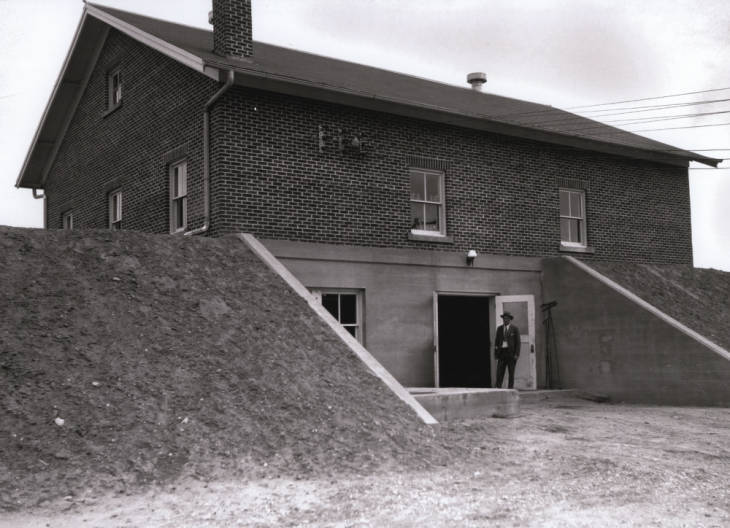Forsyth Water Pumping Station

Recognizing that successful communities require infrastructure, Forsyth’s civic leaders proposed construction of a waterworks and sewerage system in 1906. As the town council asserted when it posted the bond issue, “We desire to improve the town…. If the people do not want the city to advance, they may signify their desire by their votes.” Approving $45,000 for a waterworks and $5,000 for sewerage, a majority of voters signaled their support for municipal progress. Construction of the waterworks fell to the Des Moines Bridge Building Co. The project included building a brick pumping station, settling ponds, and a concrete reservoir on the bluffs above town and installing a network of pipes through Forsyth’s developed streets. Forsyth’s frugal city council did not believe in architectural frills; the stark, industrial design of the pumping station reflects its utilitarian purpose. By February 1908, the waterworks was complete; city residents had only “to tap the mains” to “pipe the purest and clearest of water” into their homes and businesses, according to the Forsyth Times. The newspaper’s description of the water’s purity was somewhat exaggerated, as Forsyth’s 1917 typhoid scare and boil order attests. Nevertheless, the new water system did represent a considerable advance for the community, especially in the area of fire suppression. The amount of water needed to fight a fire in the business district determined the design specifications for Forsyth’s waterworks, and the community quickly took advantage of its new capacity, establishing a volunteer fire department within weeks of the waterworks’ completion.
Images
